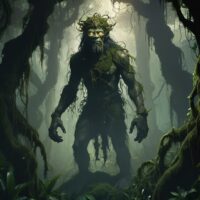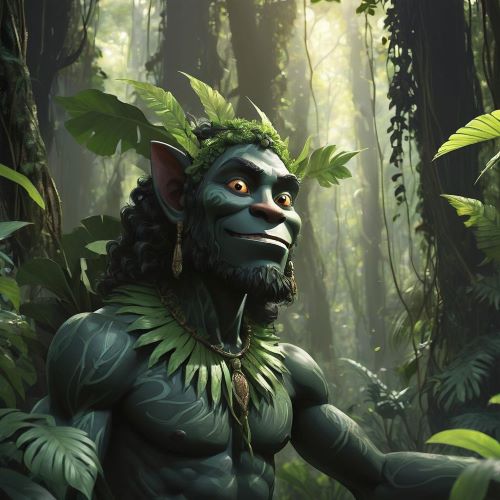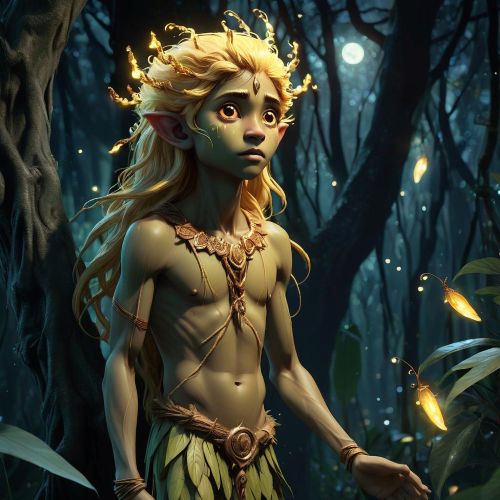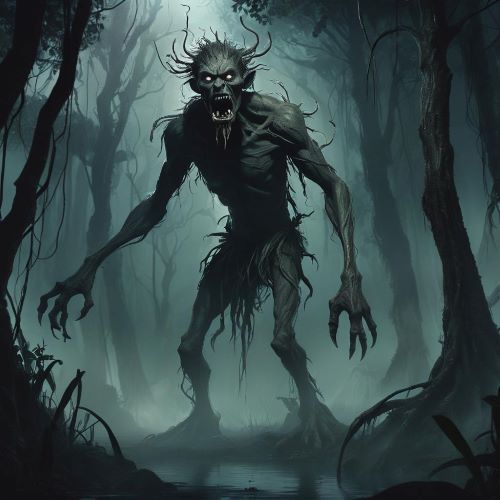Arapayan : The Forest Guardian
Listen
At a glance
| Description | |
|---|---|
| Origin | Philippine Mythology |
| Classification | Spirits |
| Family Members | N/A |
| Region | Philippines |
| Associated With | Forests, Protection |
Arapayan
Introduction
Arapayan is a compelling figure in Philippine mythology, particularly revered within the Visayan and Bicolano traditions. Often described as a spirit of mystery and caution, Arapayan embodies the indigenous worldview that nature is alive, conscious, and protected by unseen forces. Though not as well-known as some of the more prominent deities in the archipelago, Arapayan plays a crucial role as a guardian of forests and the unseen realms. His legend blends elements of animism, spiritual protection, and ritualistic power. He represents a force both feared and respected—one that demands harmony between humanity and the natural world.
Physical Traits
Arapayan is often envisioned as a forest-dwelling spirit with an otherworldly, enigmatic presence. His appearance varies slightly between regions but consistently portrays a humanoid figure cloaked in thick hair, resembling a wild man or a shadow in the trees. In upland areas of Luzon and Mindanao, he is said to have glowing eyes that pierce through the dark, misty woods, silently observing trespassers. In some myths, he possesses the ability to change form, taking the shape of birds, snakes, or deer. This gift of shapeshifting serves not only as camouflage but also as a tool for testing the character of those who enter his sacred territory. Elusive and rarely seen, Arapayan’s presence is more often felt than witnessed.
Family
Although Arapayan is generally portrayed as a solitary guardian spirit, he is frequently mentioned alongside two other powerful entities: Naginid and Makbarubak. Together, they are invoked in various rituals, especially those involving the use of potent oils and poisons. This trio does not form a conventional familial structure but rather a symbolic unity, with each figure representing an elemental or metaphysical domain. Arapayan is associated with the earth and forest, Naginid with the sea, and Makbarubak with the spirit world. Their combined presence in myth underscores a cosmology rooted in balance and interconnectedness, each deity safeguarding a realm of nature and spiritual power.
Other names
Arapayan is predominantly known by this name, though local variations such as Arapayam have surfaced in different regions, particularly in Bicolano folklore. These name changes often reflect the dialectical nuances across the Philippines. In some colonial texts, particularly those influenced by Spanish friars, Arapayan and his counterparts were wrongly characterized as “demons” or “evil spirits,” a result of the colonizers’ attempts to frame indigenous beliefs through a Christian lens. However, in post-colonial and modern interpretations, these labels have been shed, and Arapayan is now viewed more respectfully as a neutral or protective forest deity.
Powers and Abilities
Arapayan’s powers are deeply intertwined with the natural world. He is most notably linked to the creation and blessing of potent oils used in traditional rituals, often alongside Naginid and Makbarubak. These oils, believed to have magical or poisonous properties, are created through sacred rites where offerings such as crocodile teeth and coconut oil are presented. This association hints at his role in both healing and harm, depending on the intent of the practitioner.
Apart from his influence on ritual materials, Arapayan is believed to possess the ability to control perception. Those who enter his forest without respect may become disoriented, fall ill, or even go missing, interpreted by locals as punishments for offending the spirit. On the other hand, people who honor the land and approach with humility are said to be protected and may even receive spiritual insights, guidance, or dreams that lead them to healing herbs or sacred knowledge. Arapayan’s powers are not just supernatural—they are reminders of ethical conduct and respect for nature.
Modern Day Influence
Though traditional worship of Arapayan may have faded with the spread of Christianity and modernization, his influence persists in contemporary cultural movements and environmental consciousness. As interest in indigenous spirituality resurfaces, particularly among Filipino youth and cultural scholars, Arapayan is being reimagined as a powerful symbol of environmental guardianship and ancestral wisdom. He appears in art, literature, and performance, serving as a metaphor for the need to reconnect with nature and honor indigenous heritage.
In the realm of spirituality, modern babaylans and healers occasionally reference Arapayan during rituals, especially those focused on forest healing, divination, or restoring balance between humans and their environment. His narrative also resonates with modern ecological themes, portraying the forest not as a mere resource but as a sacred space with its own spirit and consciousness. In this sense, Arapayan’s legacy lives on—not just in myth, but in ongoing efforts to protect the Philippines’ rich natural and cultural landscapes.
Related Images
Source
Aswang Project. (2016, February 8). Bicolano Pantheon of Deities and Creatures | Philippine Mythology. https://www.aswangproject.com/bikolano-deities-in-philippine-mythology/
Bicolano Myths. (2016, January 7). Arapan, Nagined and Makbarubak – Bicolano Myths. http://bicolanomythsofgodsandmonsters.blogspot.com/2017/01/arapan-nagined-and-makbarubak.html
Bicolano Myths. (2017, January 17). Bicolano Mythological creatures. http://bicolanomythsofgodsandmonsters.blogspot.com/2017/01/bicolano-mythological-creatures.html
Caleb. (2019, March 4). In Philippine Mythology, Nagined, Arapayan, and … X. https://x.com/sethpuertoluna/status/1102677324523200512?lang=de
JE2L (Jurnal of English Education, Literasi, and Linguistics). (2021). Folk healing narratives: A grounded theory. https://jurnal.stain-madina.ac.id/index.php/je2l/article/view/407
Frequently Asked Questions
What is lorem Ipsum?
I am text block. Click edit button to change this text. Lorem ipsum dolor sit amet, consectetur adipiscing elit. Ut elit tellus, luctus nec ullamcorper mattis, pulvinar dapibus leo.
What is lorem Ipsum?
I am text block. Click edit button to change this text. Lorem ipsum dolor sit amet, consectetur adipiscing elit. Ut elit tellus, luctus nec ullamcorper mattis, pulvinar dapibus leo.
What is lorem Ipsum?
I am text block. Click edit button to change this text. Lorem ipsum dolor sit amet, consectetur adipiscing elit. Ut elit tellus, luctus nec ullamcorper mattis, pulvinar dapibus leo.
What is lorem Ipsum?
I am text block. Click edit button to change this text. Lorem ipsum dolor sit amet, consectetur adipiscing elit. Ut elit tellus, luctus nec ullamcorper mattis, pulvinar dapibus leo.
What is lorem Ipsum?
I am text block. Click edit button to change this text. Lorem ipsum dolor sit amet, consectetur adipiscing elit. Ut elit tellus, luctus nec ullamcorper mattis, pulvinar dapibus leo.










